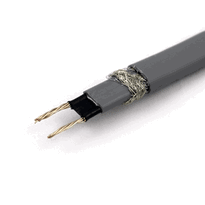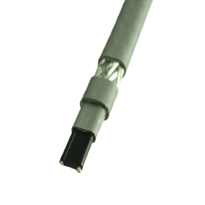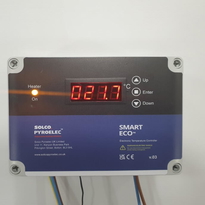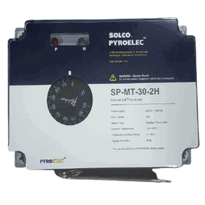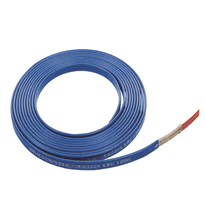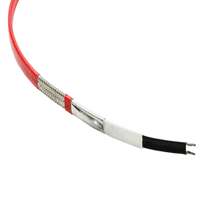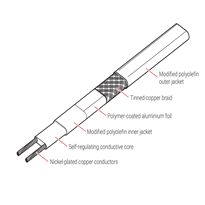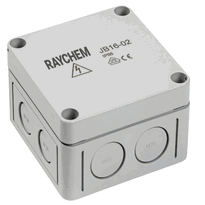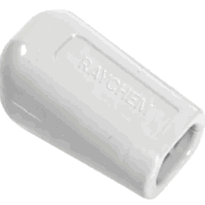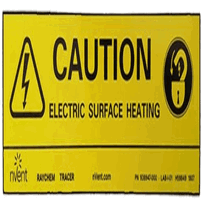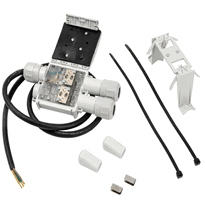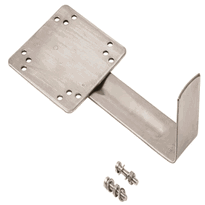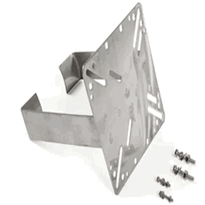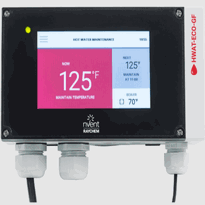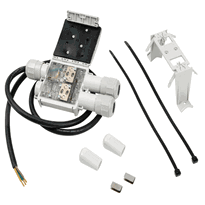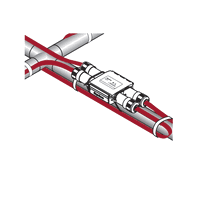Heat Trace for Pex Pipe
Heat trace for PEX pipes involves installing specialized electrical cables, such as self-regulating or constant-wattage types, along the piping to prevent freezing and damage. Proper selection depends on climate conditions, pipe length, and electrical compatibility, with options ranging from pre-assembled systems to customized setups.
Installation requires careful cable placement at consistent spacing, secure attachment, and proper insulation, all following safety standards and manufacturer instructions. Ensuring correct earthing and regular maintenance improves system reliability; further details reveal how to optimize these protective measures effectively.
Types of Heat Tracing Cables for PEX Pipes
There are several types of heat tracing cables designed specifically for use with PEX pipes, each offering distinct advantages and suitable applications based on environmental conditions and installation needs. Self-regulating heat tapes adapt their heat output according to ambient temperatures, increasing heat as needed to prevent freezing without risking overheating or pipe damage. They are energy efficient and reduce the risk of fire hazards, making them a popular choice for residential and commercial installations. Constant-wattage cables provide a fixed output, which is beneficial for long pipe runs or extremely cold environments. However, they may consume more energy in moderate conditions, making them less efficient in less severe climates. Voltage-specific cables, such as 12 or 24 volts, are selected based on the electrical supply and safety standards. Ensuring compatibility with PEX pipes and the existing electrical infrastructure is vital for safe and effective operation. Pre-assembled systems, like the EXT-R series, combine advanced self-regulating technology with ease of installation and outdoor safety. These systems are reliable choices for freeze protection in various settings, offering peace of mind and reduced installation complexity. Choosing the right type of cable is essential because it directly impacts the efficiency, safety, and longevity of the pipe protection system. Selecting the appropriate heat tracing cable depends on environmental conditions, pipe length, energy efficiency considerations, safety standards relevant to the UK setting, and proper installation practices.
Installation Techniques for Optimal Performance
Installation Techniques for Optimal Performance of Heat Trace Systems with PEX Pipes
Proper installation techniques are crucial to ensure that the heat trace system performs safely and effectively when used with PEX pipes. The following guidelines outline the key steps and considerations for a successful installation in the UK.
Surface Preparation
Begin by thoroughly inspecting all pipes for any leaks, cracks, or damage before installation. Failing to identify issues may result in electrical hazards or compromised efficiency. The surface where the heat tape will be applied should be cleaned and dried completely to promote optimal adhesion. Remove any old wrapping or insulation materials to prevent interference with the new system. Ensuring a clean, smooth surface provides the best foundation for the heat tape’s performance. Using appropriate tools to remove dirt and corrosion can further improve contact and heat transfer.
Heat Tape Installation
Apply the heat tape alongside the PEX pipe, maintaining the manufacturer-recommended spacing, which generally ranges from 30 to 35 centimeters. Use aluminium foil tape to secure the heat tape in place; this enhances heat transfer between the tape and the pipe. When securing the tape, do so firmly without compressing or damaging it to prevent uneven contact and ensure consistent heat distribution.
Insulation and Safety Measures
Select appropriate insulation materials that match the local climate conditions to minimize heat loss. Proper insulation is vital in retaining warmth along the pipe run, thereby improving system efficiency. When dealing with electrical connections, ensure all wiring complies with safety standards. Use safety devices such as RCDs (Residual Current Devices) or GFCIs (Ground Fault Circuit Interrupters) for additional protection, especially in damp or outdoor environments. Regular inspections during cold weather will help maintain system reliability and detect potential issues early.
Summary of Key Considerations
Step |
Key Considerations |
| Surface Preparation | Clean and dry surface; inspect for leaks or damage |
| Heat Tape Installation | Maintain spacing; secure with aluminium foil tape; avoid compression |
| Insulation and Safety Measures | Use suitable insulation; verify electrical safety compliance |
Following these installation best practices will help ensure that your heat trace system functions efficiently and safely, providing reliable performance throughout the colder months.
Benefits of Using Heat Trace in Cold Climates
In regions experiencing cold UK winters, the use of heat trace systems alongside PEX piping delivers considerable practical advantages by actively preventing pipe freezing and subsequent damage. Heat trace maintains water temperature above freezing point by electrically warming the pipes, which inhibits the formation of ice that can cause cracks or bursts. Self-regulating pipe heating cable systems are designed to respond to temperature changes, ensuring energy-efficient operation tailored to outdoor conditions. The flexibility of PEX pipe, combined with heat trace, allows for expansion without damage, thereby reducing the risk of system failure. When applied on insulated pipes, heat trace enhances freeze prevention by compensating for heat loss through pipe walls.
Furthermore, incorporating innovative eco-friendly electrical heating solutions supports sustainable building practices by reducing energy consumption and minimizing environmental impact. Consistent heating ensures an uninterrupted flow of water, avoiding issues caused by frozen pipes. Moreover, heat trace systems offer energy-efficient operation through adjustable thermostats, helping to minimize heating costs while maintaining optimal pipe temperatures. This integrated approach promotes long-term system reliability, reduces maintenance requirements, and helps prevent costly repairs in cold environments.
Safety Measures for Installing and Maintaining Heat Trace Systems
Ensuring safety during the installation and maintenance of heat trace systems on PEX pipes is essential to prevent electrical hazards, material damage, and system failures. Proper selection of heat trace, such as self-regulating tape approved for PEX, improves energy efficiency and minimizes risks. Application of heat tape on PEX should be performed using manufacturer-approved methods, considering material compatibility. Installation procedures should include inspecting pipes for damage, avoiding wrapping too tightly, and following manufacturer guidelines for spacing.
Electrical safety mandates the use of qualified personnel, grounding with Residual Current Devices (RCDs) or Ground Fault Circuit Interrupters (GFCIs), and avoiding placement near high-heat sources.
Regular inspections are critical; visual checks for wear, testing operation before freezing seasons, and immediate replacement of damaged components help prevent system malfunction.
Failure to adhere to these safety measures increases the risk of hazards, underscoring the importance of careful planning, proper execution, and ongoing system review.
Always prioritize compliance with relevant UK electrical standards and manufacturer instructions to ensure safe and efficient operation of heat trace systems on PEX pipes.
Tips for Maximising Efficiency With Insulation and Heat Trace
Maximizing the efficiency of heat trace systems on PEX pipes requires a strategic combination of insulation and proper installation techniques. High-quality, moisture-resistant closed-cell foam insulation that matches environmental conditions enhances thermal retention. In colder climates, thicker insulation is essential to prevent heat loss, while sealing joints or end caps minimizes air infiltration.
Proper installation of heat trace cables involves applying them in a spiral or straight pattern with consistent spacing, avoiding overlaps that can lead to overheating. Securing cables firmly ensures stable contact, resulting in more effective heat transfer. Utilizing temperature controllers and sensors further optimizes energy use by activating heat only when necessary. Implementing advanced manufacturing techniques in the manufacturing process can also improve insulation performance and durability.
Careful planning and regular maintenance of both insulation and heat trace systems will extend the lifespan of your pipes and improve overall energy efficiency.
Insulation Type |
Installation Technique |
Energy Optimisation |
| Moisture-resistant foam | Spiral or straight application | Use thermostats and sensors |
| Compatibility with PEX | Secure cables before insulation | Schedule regular insulation checks |
| Thicker insulation for cold | Avoid overlaps in tracing | Incorporate thermal modelling |
Implementing these best practices ensures reliable operation, reduces energy consumption, and prolongs the service life of your piping system.
Conclusion
Proper installation and maintenance of heat trace systems for PEX pipes are essential for ensuring reliability, preventing freezing, and enhancing energy efficiency. Selecting suitable cable types, following correct installation procedures, and implementing appropriate safety measures are vital for optimal performance, particularly in colder climates.
Combining effective insulation with heat trace systems helps to minimize energy consumption while safeguarding the integrity of the piping. Adhering to these detailed guidelines guarantees the durability and safety of piping systems, supporting long-term functionality and cost-effective operation across diverse environmental conditions.








